
The Tombs of the Kings: A Journey Through Ancient Majesty
Explore the ancient majesty of the Tombs of the Kings in Cyprus, a UNESCO site that offers a unique blend of history, culture, and stunning coastal views.
The Tombs of the Kings in Cyprus is a UNESCO World Heritage site that offers a glimpse into the ancient world. Located near Paphos, this site features a collection of underground tombs dating back to the 4th century BC. Despite the name, no actual kings were buried here; the tombs were the final resting places for high-ranking officials and aristocrats of the time. As you explore the site, you'll be struck by the grandeur and intricate design of these tombs. Carved out of solid rock and adorned with Doric columns, they reflect the architectural influences of both Greek and Egyptian cultures. The sheer size and complexity of the tombs are awe-inspiring and provide a unique insight into the burial practices and social hierarchies of ancient Cyprus. The site is not just for history buffs. The Tombs of the Kings are surrounded by stunning coastal scenery, making it a perfect spot for photography and quiet contemplation. The area is well-preserved, offering a peaceful and reflective atmosphere. Whether you're interested in ancient history, architecture, or simply looking for a serene place to visit, the Tombs of the Kings is a must-see destination.
Local tips in Tombs of the Kings
- Visit early in the morning or late in the afternoon to avoid the crowds and the midday heat.
- Wear comfortable walking shoes as the terrain can be uneven.
- Bring water and sunscreen, especially during the summer months.
- Take a guided tour to learn more about the history and significance of the tombs.
- Don't miss the chance to explore the nearby Paphos Archaeological Park for a more comprehensive understanding of the area's history.
The Tombs of the Kings: A Journey Through Ancient Majesty
The Tombs of the Kings in Cyprus is a UNESCO World Heritage site that offers a glimpse into the ancient world. Located near Paphos, this site features a collection of underground tombs dating back to the 4th century BC. Despite the name, no actual kings were buried here; the tombs were the final resting places for high-ranking officials and aristocrats of the time. As you explore the site, you'll be struck by the grandeur and intricate design of these tombs. Carved out of solid rock and adorned with Doric columns, they reflect the architectural influences of both Greek and Egyptian cultures. The sheer size and complexity of the tombs are awe-inspiring and provide a unique insight into the burial practices and social hierarchies of ancient Cyprus. The site is not just for history buffs. The Tombs of the Kings are surrounded by stunning coastal scenery, making it a perfect spot for photography and quiet contemplation. The area is well-preserved, offering a peaceful and reflective atmosphere. Whether you're interested in ancient history, architecture, or simply looking for a serene place to visit, the Tombs of the Kings is a must-see destination.
When is the best time to go to Tombs of the Kings?
Iconic landmarks you can’t miss
Petra tou Romiou (Aphrodite's Rock)
Explore Petra tou Romiou, the legendary birthplace of Aphrodite, where stunning coastal views meet ancient mythology and cultural heritage.
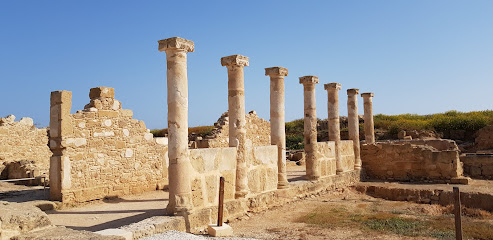
Archaeological Site of Nea Paphos
Discover the Archaeological Site of Nea Paphos in Cyprus, where ancient history, stunning mosaics, and cultural treasures await every visitor.
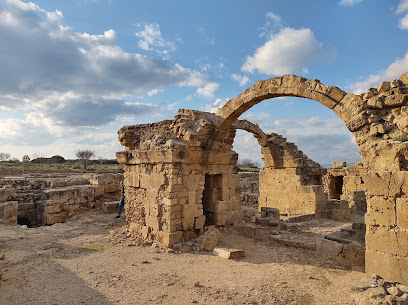
Archaeological Site of the Tombs of the Kings
Explore the Archaeological Site of the Tombs of the Kings, a captivating historical landmark in Cyprus filled with ancient tombs and breathtaking views.
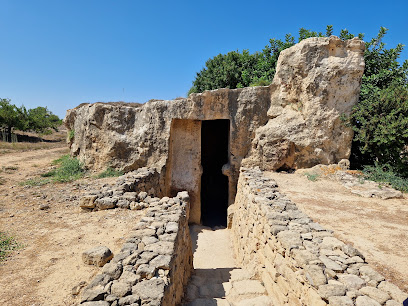
Paphos Castle
Discover the historical beauty of Paphos Castle, a captivating landmark overlooking the Mediterranean, rich in history and stunning views.
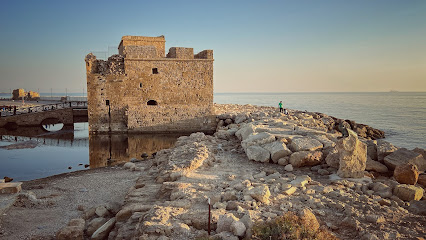
Paphos Mosaics
Explore the Paphos Mosaics, a UNESCO World Heritage site showcasing stunning ancient Roman artistry in the heart of Cyprus.
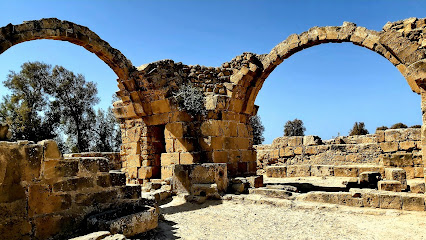
House of Dionysus
Discover the stunning mosaics and rich history at the House of Dionysus, a UNESCO World Heritage site in Paphos, Cyprus.
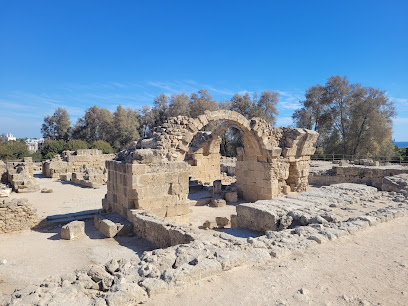
Archaeological Site of Palaepaphos
Explore the enchanting Archaeological Site of Palaepaphos, a historical treasure in Cyprus, steeped in myths, mosaics, and ancient architecture.
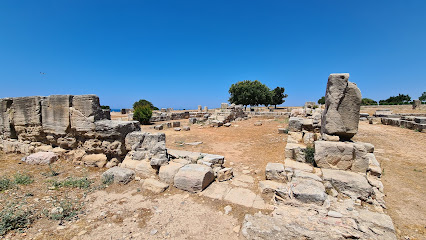
Agia Solomoni Catacomb
Explore the Agia Solomoni Catacomb in Paphos, a historical shrine showcasing ancient rock-cut tombs and stunning frescoes from the early Christian era.
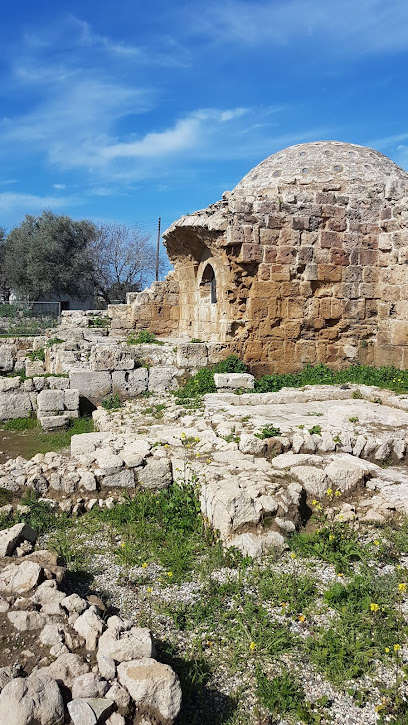
Lighthouse
Explore the stunning Lighthouse of Paphos, a historical landmark offering breathtaking coastal views and a glimpse into Cyprus's maritime heritage.
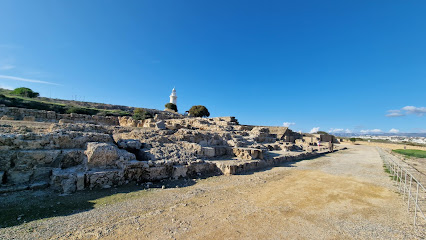
St Paul's Church and archeological site
Explore the rich history and stunning architecture of St Paul's Church and Archaeological Site in Paphos, Cyprus, a must-visit for history lovers.
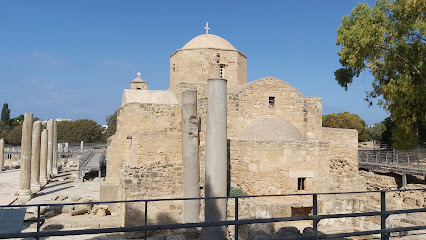
Catacombs
Explore the captivating Catacombs of Paphos, an ancient burial site that reveals the rich history and architectural beauty of Cyprus.
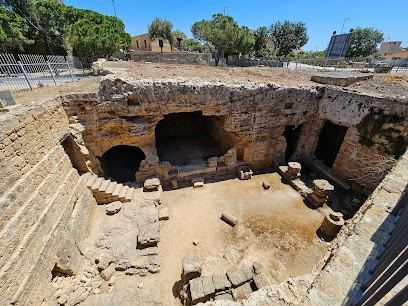
Forty Columns Fortress
Explore the historical beauty of Forty Columns Fortress in Paphos, a UNESCO World Heritage site rich in culture and stunning coastal views.
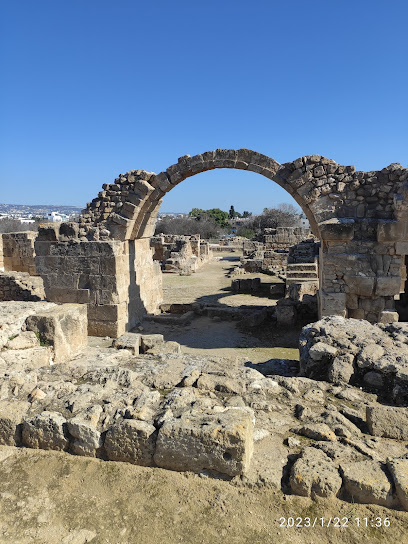
Villa of Theseus
Discover the Villa of Theseus, a captivating historical landmark in Paphos, Cyprus, renowned for its stunning mosaics and rich cultural heritage.
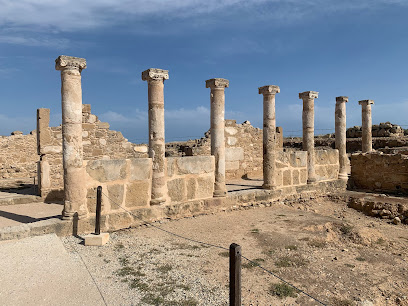
House of Aion
Explore the House of Aion in Paphos, Cyprus – a historical landmark showcasing stunning Roman mosaics and rich cultural heritage.
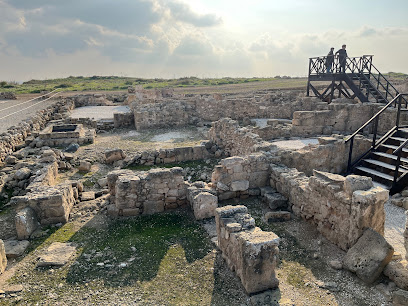
Meletis Forest Necropolis
Explore the ancient wonders of the Meletis Forest Necropolis in Cyprus, where history and nature intertwine in a serene setting.
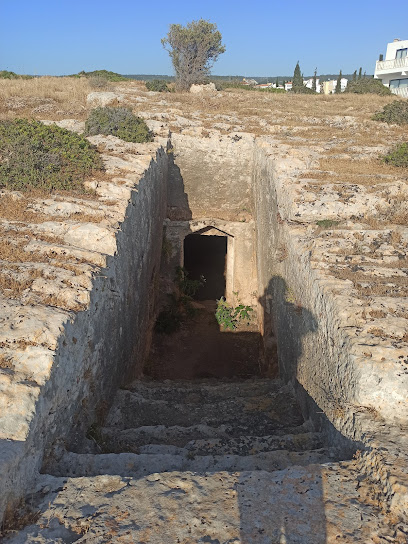
Unmissable attractions to see
Paphos Market
Explore the vibrant Paphos Market, a treasure trove of local goods and authentic Cypriot culture amidst stunning coastal views.

Lighthouse
Explore the historic Lighthouse of Paphos, a picturesque landmark offering stunning coastal views and rich maritime history in Cyprus.
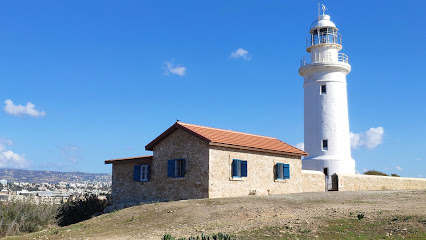
Catacombs
Discover the enchanting Catacombs of Paphos, where history meets spirituality in the heart of Cyprus.
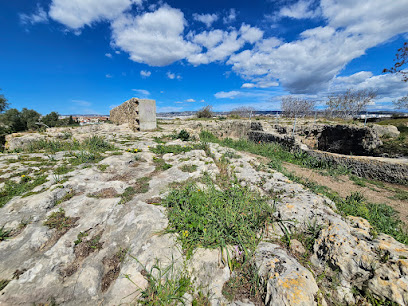
Kato Paphos - Ta Mpania
Experience the best of Cyprus at Kato Paphos - Ta Mpania, where ancient history meets stunning coastal beauty in a vibrant atmosphere.

Villa of Theseus
Experience the captivating beauty and rich history of the Villa of Theseus, a must-see historical landmark in Paphos, Cyprus.
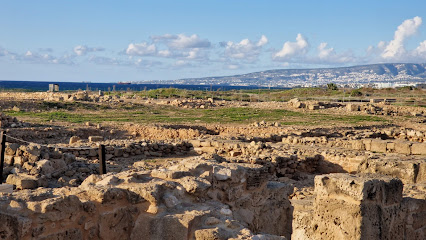
The Place
Discover the essence of Cypriot culture at The Place, a unique gift shop and cultural center in Paphos, offering local art and handmade crafts.

Smigies Nature Trail
Explore the Smigies Nature Trail in Neo Chorio, Cyprus – a serene journey through captivating landscapes and rich biodiversity.
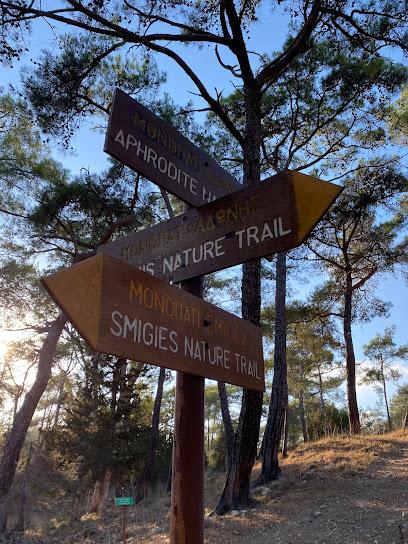
Nelion Winery
Experience the perfect blend of Cypriot wine and coffee at Nelion Winery in Praitori, where every sip tells a story.
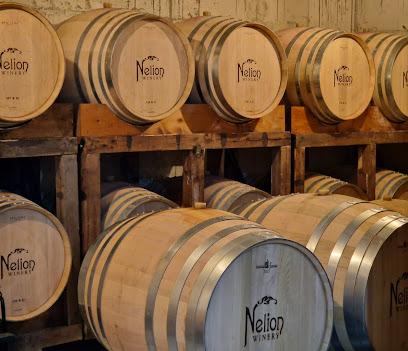
Ottoman Baths
Immerse yourself in the historical charm of the Ottoman Baths, a serene landmark in Paphos, Cyprus, offering a unique glimpse into the region's rich heritage.
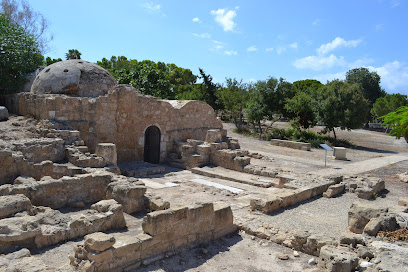
The Little Fisherman
Experience the scenic beauty and cultural heritage at The Little Fisherman, a charming statue overlooking the harbor in Paphos, Cyprus.

House of Orpheus
Explore the House of Orpheus in Paphos, Cyprus – a captivating historical landmark featuring stunning mosaics and rich cultural heritage.

Λιμανάκι Πάφου
Discover the beauty of Limanaki Paphos, a coastal oasis in Cyprus, where stunning beaches, delicious cuisine, and rich history await.
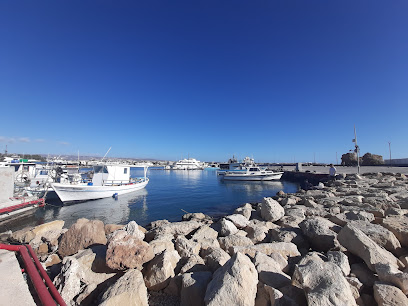
Fabrika Hill Cave Complex- Megalithic site
Discover the historical and natural beauty of Fabrika Hill Cave Complex, a megalithic site that showcases the rich heritage of Paphos, Cyprus.
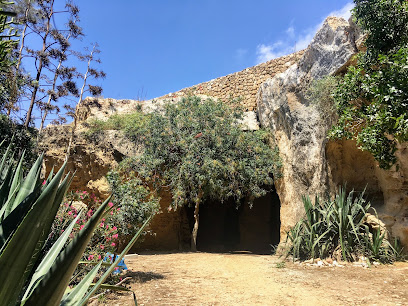
Basilica of Panagia Limeniotissa
Explore the historic Basilica of Panagia Limeniotissa in Paphos, a captivating ruin steeped in Byzantine heritage amidst stunning landscapes.

The Blue Shell House
Explore the vibrant Blue Shell House in Paphos, a stunning tourist attraction that merges contemporary art with Cypriot culture.

Essential places to dine
The Harbour
Experience authentic Mediterranean flavors at The Harbour in Paphos – where every meal is complemented by breathtaking sea views.
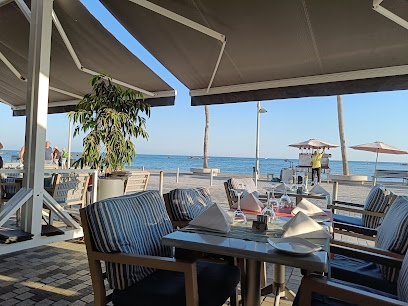
O'Neill's Irish Bar and Grill
Discover authentic Irish cuisine at O'Neill's Bar & Grill in Paphos – where warmth meets flavor!
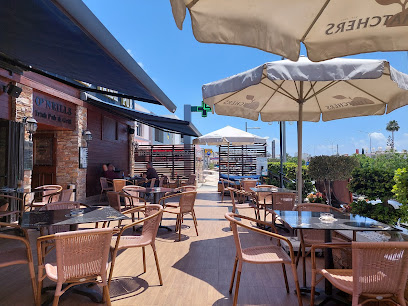
Dias Zeus Restaurant
Experience authentic Greek cuisine at Dias Zeus Restaurant in Paphos - where tradition meets flavor in every dish.
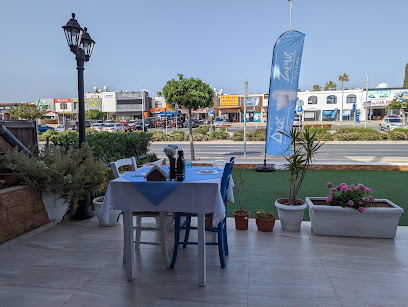
The Windmill
Discover delightful flavors at The Windmill, where traditional Cypriot cuisine meets modern dining in the heart of Paphos.

Duomo Ristorante Italiano
Experience authentic Italian flavors at Duomo Ristorante Italiano in Paphos - where every meal tells a delicious story.
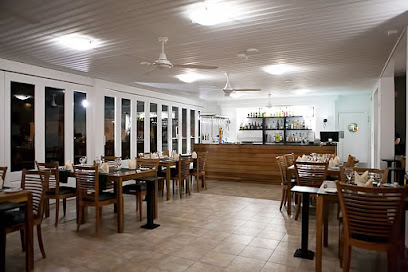
Tea for Two, Tombs of the Kings Avenue 42, Paphos
Discover Tea for Two in Paphos: A delightful British restaurant offering delicious meals and an inviting atmosphere perfect for relaxation.

Karlina Restaurant
Discover the flavors of Cyprus at Karlina Restaurant in Paphos – where authentic cuisine meets warm hospitality.
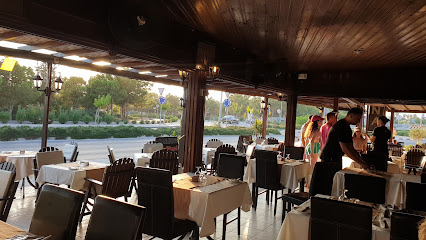
Fat Mama's
Experience the best of Cypriot cuisine at Fat Mama's in Paphos—where flavors meet warmth and hospitality.
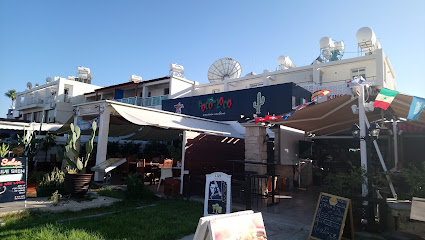
Martelli Pizza Italian Restaurant
Discover the essence of Italy at Martelli Pizza Italian Restaurant in Paphos – where authentic flavors meet warm hospitality.
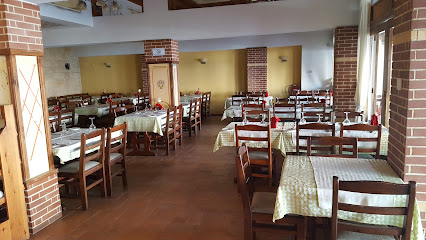
Kingfisher Taverna
Experience authentic Cypriot seafood at Kingfisher Taverna in Paphos - where every meal is a celebration of Mediterranean flavors.
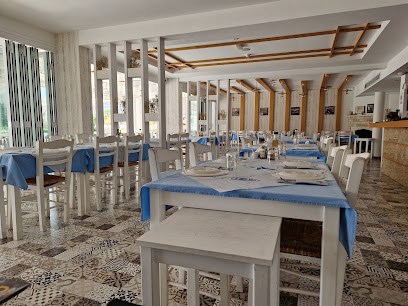
Gustoso Restaurant
Experience authentic Mediterranean flavors at Gustoso Restaurant near Tombs of the Kings in Paphos – a culinary delight not to be missed!
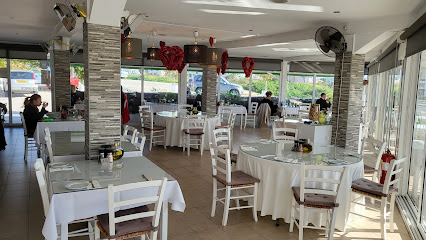
Laterna Taverna
Discover authentic Cypriot cuisine at Laterna Taverna in Paphos - where tradition meets taste in every dish.
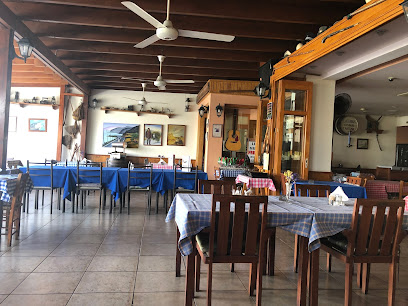
Kings Restaurant
Experience exquisite seafood and Mediterranean cuisine at Kings Restaurant in Paphos - where every meal is a celebration of flavor.
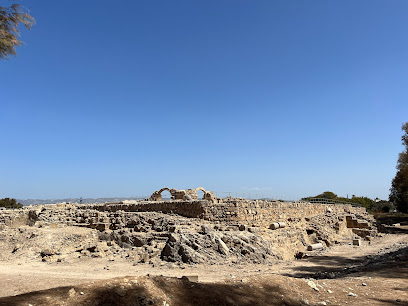
BALKANIKA RESTAURANT
Discover Balkanika Restaurant in Paphos - where traditional Cypriot flavors meet modern culinary artistry.

Hickory Restaurant
Discover Hickory Restaurant in Paphos – where Mediterranean flavors meet vibrant atmosphere for an unforgettable dining experience.
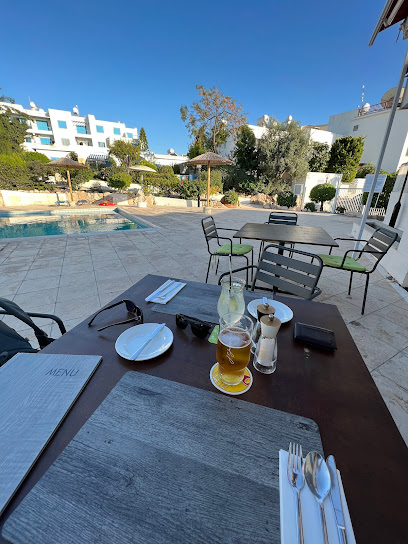
Markets, malls and hidden boutiques
Kings Avenue Mall
Discover a world of shopping, dining, and entertainment at Kings Avenue Mall in Paphos, Cyprus - the ultimate retail destination for tourists.

The Place
Discover authentic Cypriot crafts and art at The Place, Paphos' cultural hub for unique gifts and local treasures.
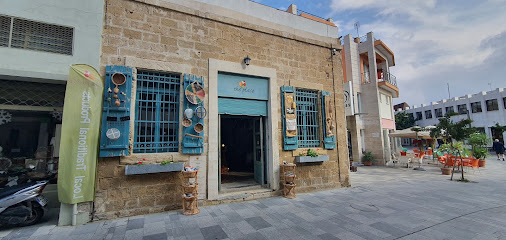
Crystal Shop Cyprus
Explore the magical world of crystals and spiritual supplies at Crystal Shop Cyprus, your one-stop shop for unique gifts and aromatic delights.
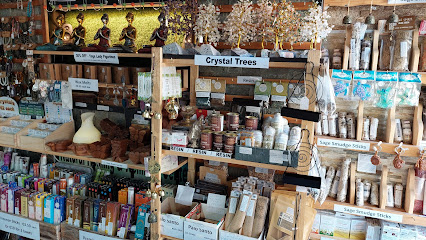
JACK & JONES
Explore the latest men's fashion trends at JACK & JONES in Paphos, Cyprus, where style meets quality in a vibrant shopping environment.

LACOSTE Kings Avenue Mall Paphos
Explore the stylish selections at LACOSTE Kings Avenue Mall in Paphos, where fashion meets comfort in a vibrant shopping atmosphere.
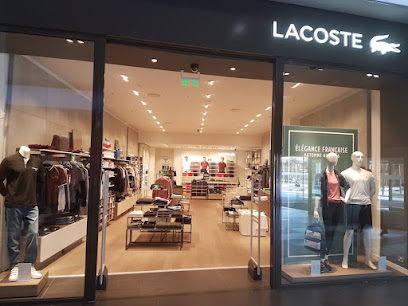
Spontas Souvenirs and Gifts
Explore Spontas Souvenirs and Gifts in Paphos for unique traditional treasures, local crafts, and quality cosmetics that capture the spirit of Cyprus.
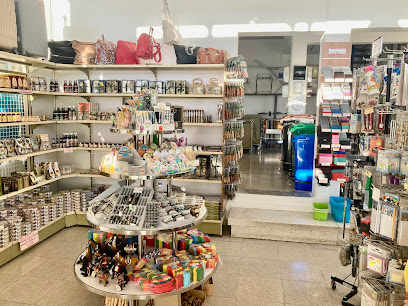
Lepus Gift Shop - Kings Avenue Mall
Explore the Lepus Gift Shop in Kings Avenue Mall, Paphos - a perfect destination for unique gifts, stylish handbags, exquisite jewelry, and elegant watches.
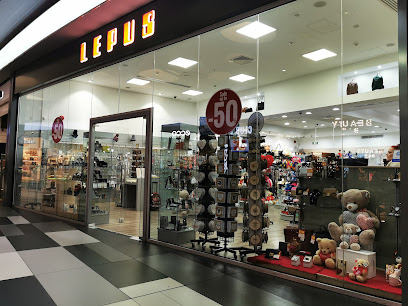
Mango
Discover trendy fashion at affordable prices in Paphos' stylish Mango outlet store, perfect for tourists looking to update their wardrobe.

Cosmos Gallery.
Discover the essence of Cypriot culture at Cosmos Gallery, a treasure trove of unique gifts and local artworks in Paphos.
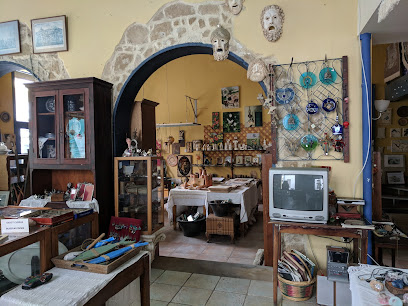
Sea View Souvenir & Gift Shop.
Explore the vibrant Sea View Souvenir & Gift Shop in Paphos for unique gifts, local crafts, and stylish beachwear that capture the essence of Cyprus.
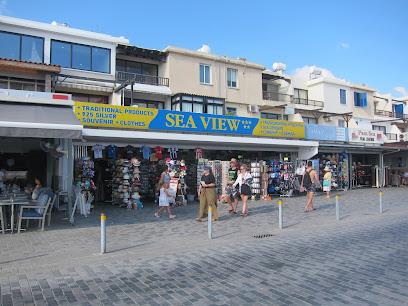
Psi Cultural Gift Shop
Explore the heart of Cypriot culture at Psi Cultural Gift Shop, where local crafts and unique souvenirs await every traveler.

Y.M. STOA Souvenir Shop
Explore Y.M. STOA Souvenir Shop in Paphos for authentic Cypriot crafts, unique gifts, and a memorable shopping experience.
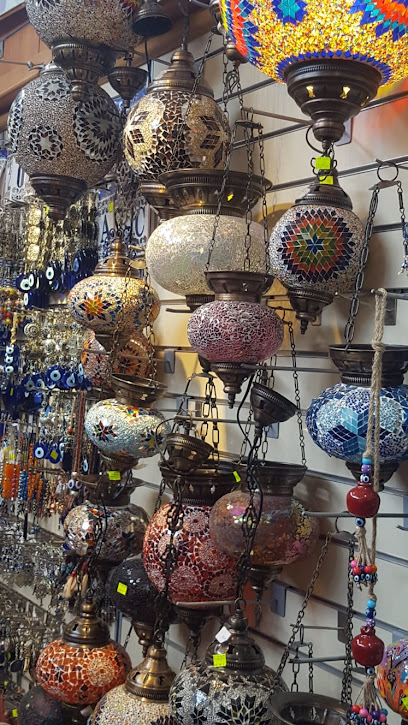
The Tyche Gallery
Discover unique handmade gifts at The Tyche Gallery, a local treasure in Paphos, Cyprus, showcasing the artistry and culture of the region.
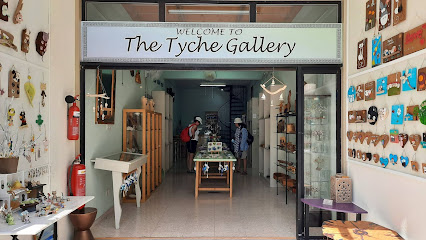
Station of Traditional Products & Gifts.
Discover unique souvenirs and traditional gifts at the Station of Traditional Products & Gifts in Paphos, Cyprus, your ultimate shopping destination.
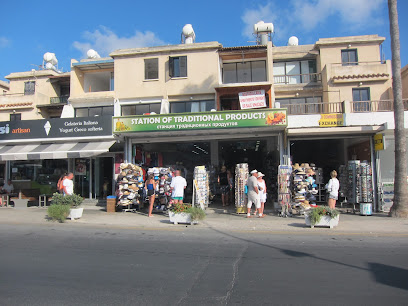
Have A Look Souvenir & Gift Shop.
Explore eclectic gifts, clothing, and swimwear at Have A Look Souvenir & Gift Shop in Paphos, Cyprus - a treasure trove for tourists.
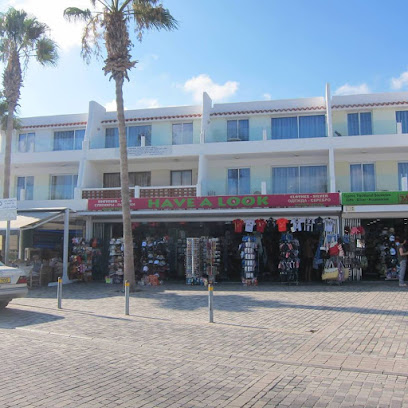
Essential bars & hidden hideouts
O'Neill's Irish Bar and Grill
Discover the heart of Ireland in Paphos at O'Neill's Irish Bar and Grill, where authentic cuisine meets vibrant atmosphere.
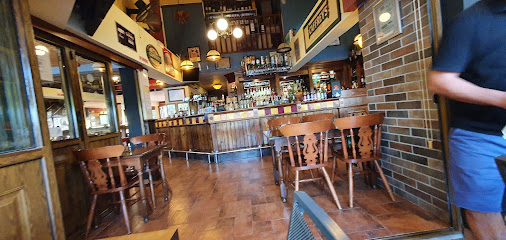
The Wooden Pub
Discover the heart of Paphos nightlife at The Wooden Pub, where unique beers, friendly faces, and unforgettable moments await.
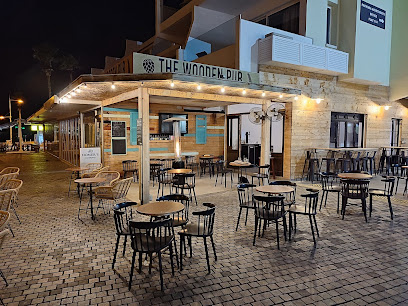
Pit Stop Pub
Discover the lively charm of Pit Stop Pub in Paphos, where great food, drinks, and entertainment await every visitor.
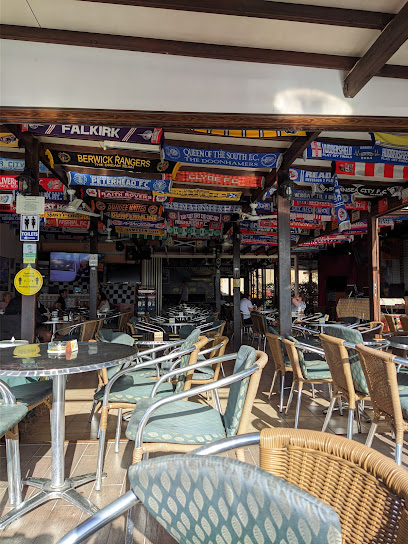
Boulevard Bistro Wine Bar
Discover the delightful fusion of exceptional cuisine, fine wines, and live music at Boulevard Bistro Wine Bar in the heart of Paphos, Cyprus.
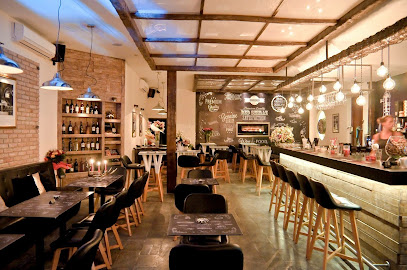
Piedra All Day Cafe Lounge Bar.
Discover the perfect blend of relaxation and vibrancy at Piedra All Day Cafe Lounge Bar, Cyprus' ultimate spot for brunch, cocktails, and good times.
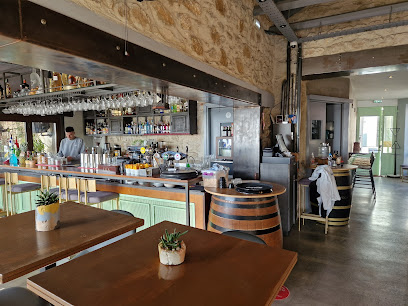
Mr Tippler Bar
Discover the vibrant atmosphere and unique cocktails at Mr Tippler Bar, a must-visit destination for tourists in Paphos, Cyprus.
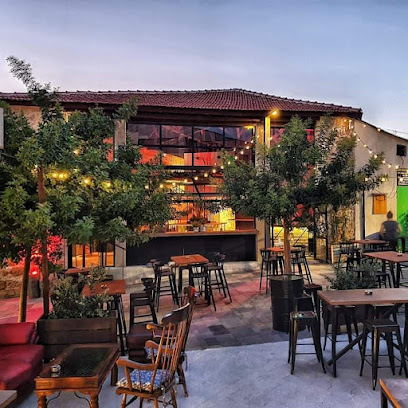
Kings Road Cafe Pub Sports Bar
Experience the vibrant atmosphere of Kings Road Cafe Pub Sports Bar in Paphos, where sports, food, and fun come together for an unforgettable night out.
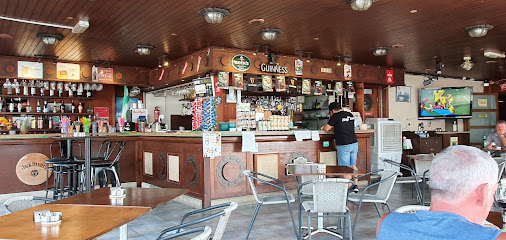
Ben's Bar
Experience the vibrant culinary scene at Ben's Bar in Paphos, where delicious grilled dishes meet a relaxed atmosphere in the heart of Cyprus.

Rum and Jam
Discover Rum and Jam in Paphos, where innovative cocktails, delicious brunch, and artisanal coffee create an unforgettable dining experience.
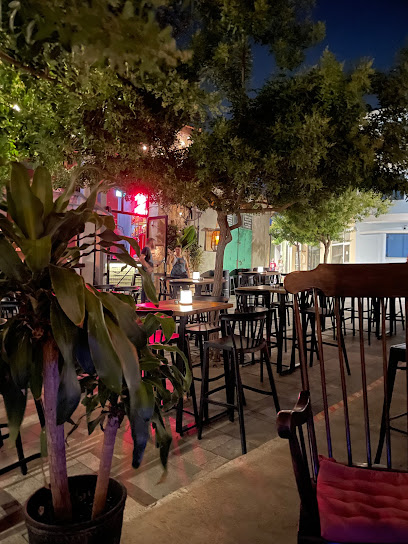
DT's Sunset Bistro Bar
Experience the perfect blend of local flavors and stunning sunsets at DT's Sunset Bistro Bar in Paphos, Cyprus.
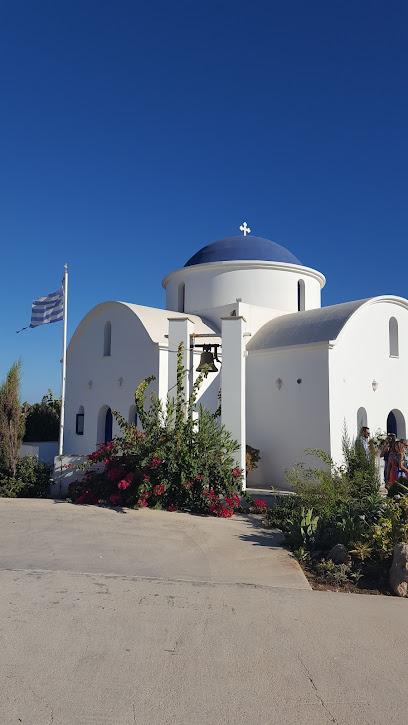
Farmhouse Restaurant & Lounge Bar
Discover culinary bliss at Farmhouse Restaurant & Lounge Bar in Paphos, where local flavors meet international cuisine in a cozy atmosphere.
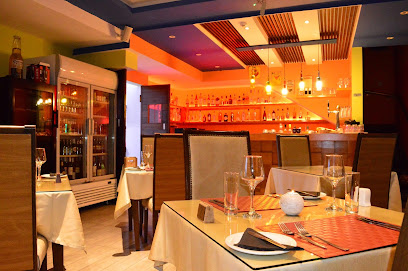
Different Bar
Experience the vibrant nightlife and inclusivity at Different Bar in Paphos, where every night is a celebration of diversity and joy.
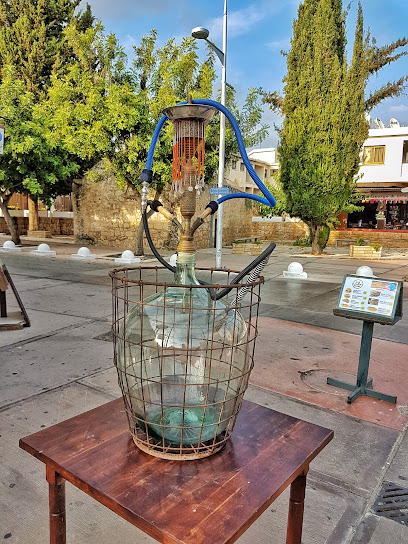
Memories Cocktail Bar
Discover the vibrant nightlife of Paphos at Memories Cocktail Bar, where expertly crafted cocktails and a lively atmosphere await every visitor.
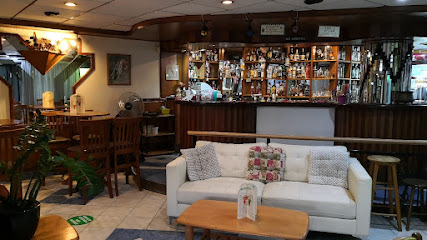
Copa Bar
Experience the vibrant flavors of Cyprus at Copa Bar, Paphos' top destination for delicious grilled dishes and a lively atmosphere.
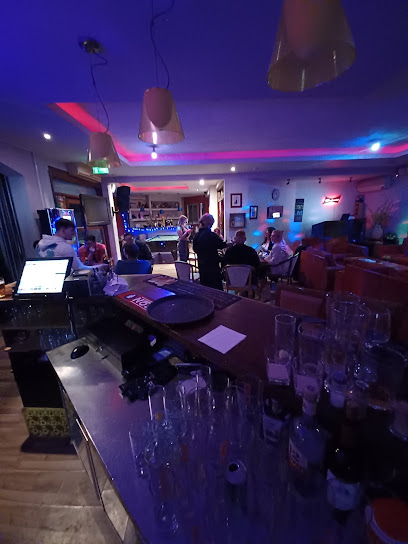
Burgers 'n Blues
Experience gourmet burgers and vibrant nightlife at Burgers 'n Blues in Paphos, a top destination for food lovers and travelers.
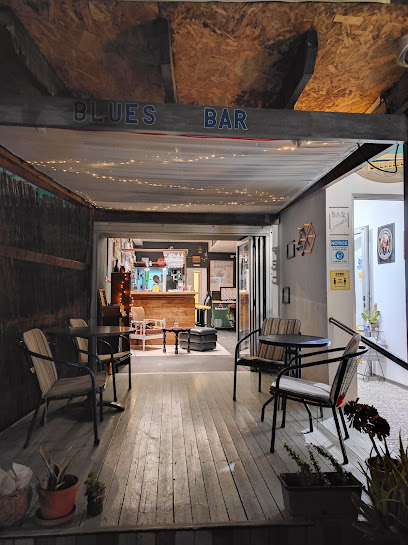
Local Phrases about Tombs of the Kings
-
- HelloΓειά σου
[Yia sou] - GoodbyeΑντίο
[Adio] - YesΝαι
[Ne] - NoΌχι
[Ochi] - Please/You're welcomeΠαρακαλώ
[Parakalo] - Thank youΕυχαριστώ
[Efharisto] - Excuse me/SorryΣυγγνώμη
[Signomi] - How are you?Πώς είσαι;
[Pos ise;] - Fine. And you?Καλά. Εσύ;
[Kala. Esi;] - Do you speak English?Μιλάς Αγγλικά;
[Milas Agglika;] - I don't understandΔεν καταλαβαίνω
[Den katalaveno]
- HelloΓειά σου
-
- I'd like to see the menu, pleaseΘα ήθελα να δω το μενού, παρακαλώ
[Tha ithela na do to menou, parakalo] - I don't eat meatΔεν τρώω κρέας
[Den troo kreas] - Cheers!ΥΓΕΙΑ!
[Yia] - I would like to pay, pleaseΘα ήθελα να πληρώσω, παρακαλώ
[Tha ithela na plirosso, parakalo]
- I'd like to see the menu, pleaseΘα ήθελα να δω το μενού, παρακαλώ
-
- Help!Βοήθεια!
[Voithia!] - Go away!Φύγε!
[Fiye!] - Call the Police!Καλέστε την Αστυνομία!
[Kaleste tin Astinomia!] - Call a doctor!Καλέστε έναν γιατρό!
[Kaleste enan giatro!] - I'm lostΈχω χαθεί
[Eho hafi] - I'm illΕίμαι άρρωστος
[Ime arrostos]
- Help!Βοήθεια!
-
- I'd like to buy...Θα ήθελα να αγοράσω...
[Tha ithela na agoraso...] - I'm just lookingΑπλά κοιτάω
[Apla kitao] - How much is it?Πόσο κοστίζει;
[Poso kostizi;] - That's too expensiveΑυτό είναι πολύ ακριβό
[Afto ine poli akribo] - Can you lower the price?Μπορείτε να μειώσετε την τιμή;
[Borite na meiosete tin timi;]
- I'd like to buy...Θα ήθελα να αγοράσω...
-
- What time is it?Τι ώρα είναι;
[Ti ora ine;] - It's one o'clockΕίναι μία ώρα
[Ine mia ora] - Half past (10)Μισή (10)
[Misi (10)] - MorningΠρωί
[Proi] - AfternoonΑπόγευμα
[Apoyevma] - EveningΒράδυ
[Vradi] - YesterdayΧθες
[Hthes] - TodayΣήμερα
[Simera] - TomorrowΑύριο
[Avrio] - 1Ένα
[Ena] - 2Δύο
[Dio] - 3Τρία
[Tria] - 4Τέσσερα
[Tessera] - 5Πέντε
[Pente] - 6Έξι
[Exi] - 7Επτά
[Epta] - 8Οκτώ
[Okto] - 9Εννέα
[Ennea] - 10Δέκα
[Deka]
- What time is it?Τι ώρα είναι;
-
- Where's a/the...?Πού είναι ένα/το...;
[Pou ine ena/to...;] - What's the address?Ποια είναι η διεύθυνση;
[Pia ine i diefthinsi;] - Can you show me (on the map)?Μπορείτε να μου δείξετε (στο χάρτη);
[Borite na mou dixete (sto charti);] - When's the next (bus)?Πότε είναι το επόμενο (λεωφορείο);
[Pote ine to epomeno (leoforeio);] - A ticket (to ....)Ένα εισιτήριο (για ....)
[Ena isitirio (ya ....)]
- Where's a/the...?Πού είναι ένα/το...;
History of Tombs of the Kings
-
The Tombs of the Kings, or 'Tafoi ton Vasileon,' is a large necropolis located near Paphos in Cyprus. This UNESCO World Heritage site dates back to the Hellenistic and Roman periods, and it is known for its impressive underground tombs that were carved out of solid rock. The site spans over an area of approximately 2 kilometers and showcases an extraordinary level of craftsmanship and architectural design.
-
The Tombs of the Kings were constructed during the Hellenistic period, around the 4th century BCE to the 3rd century BCE. This era was marked by the influence of Greek culture following the conquests of Alexander the Great. The tombs were built for high-ranking officials and noblemen of Paphos, reflecting the wealth and status of the individuals buried there.
-
One of the most fascinating aspects of the Tombs of the Kings is their architectural design. The tombs are characterized by their Doric columns, frescoed walls, and intricate carvings. Many of the tombs are designed to resemble the houses of the living, featuring peristyles (columned courtyards) and symmetrical layouts. The use of natural light within the tombs is also noteworthy, as some chambers have openings that allow sunlight to illuminate the interior.
-
During the Roman period, from the 1st century BCE to the 3rd century CE, the Tombs of the Kings continued to be used and expanded. Roman influences can be seen in the decorative elements and the addition of new tombs. The Romans introduced new burial practices and artistic styles, contributing to the evolving landscape of the necropolis.
-
Despite the grand name 'Tombs of the Kings,' there is no evidence to suggest that any actual kings were buried here. The name likely arose from the tombs' impressive scale and grandeur. The site was meant for Paphos' elite class rather than royalty, but the moniker has persisted through the centuries, adding a layer of mystique to the site.
-
The Tombs of the Kings were rediscovered in the early 20th century, leading to extensive archaeological excavations. The pioneering work of archaeologists such as Menelaos Markides and others brought the site to international attention. Excavations revealed a wealth of artifacts, including pottery, jewelry, and sculptures, offering valuable insights into the funerary practices and daily life of ancient Paphos.
-
In 1980, the Tombs of the Kings, along with the nearby Paphos Archaeological Park, were inscribed as UNESCO World Heritage sites. This designation recognizes the site's outstanding cultural and historical significance. Efforts have been made to preserve the tombs and the surrounding area, ensuring that future generations can continue to explore and appreciate this remarkable archaeological treasure.
-
The Tombs of the Kings hold immense cultural significance, serving as a testament to the rich history and heritage of Cyprus. The site offers a glimpse into the ancient world, showcasing the craftsmanship, artistry, and architectural ingenuity of past civilizations. It continues to be a source of fascination for historians, archaeologists, and visitors from around the globe.
Tombs of the Kings Essentials
-
Tombs of the Kings is located on the outskirts of Paphos, a city on the southwest coast of Cyprus. The nearest airport is Paphos International Airport, situated about 15 kilometers from the site. From the airport, you can take a taxi, rent a car, or use public transportation to reach the Tombs of the Kings. There are also bus services that connect Paphos with other major cities in Cyprus, including Nicosia, Limassol, and Larnaca.
-
Paphos is well-served by a network of public buses, which are a convenient and economical way to get around. The bus routes cover most of the city and its surrounding areas, including the Tombs of the Kings. Taxis are also readily available and can be hailed on the street or booked in advance. If you prefer more flexibility, consider renting a car, which will allow you to explore the region at your own pace.
-
The official currency of Cyprus is the Euro (EUR). Credit and debit cards are widely accepted in hotels, restaurants, and shops in Paphos. However, it is advisable to carry some cash for small purchases and in case you visit more remote areas where card payments may not be possible. ATMs are plentiful in Paphos, so withdrawing cash should not be an issue.
-
Paphos, including the area around the Tombs of the Kings, is generally safe for tourists. However, it is always wise to take standard precautions. Avoid leaving personal belongings unattended and be cautious in crowded areas to protect against pickpocketing. There are no specific neighborhoods with high crime rates targeting tourists, but it's always best to stay vigilant and aware of your surroundings.
-
In case of an emergency, dial 112 for immediate assistance. This number can be used for police, fire, and medical emergencies. Paphos has several medical facilities, including hospitals and clinics, where you can seek treatment if needed. It is recommended to have travel insurance that covers medical emergencies. Additionally, pharmacies are available throughout the city for minor health issues.
-
Fashion: Do dress comfortably and modestly, especially when visiting religious sites. Avoid overly revealing clothing. Religion: Do respect local customs and traditions. When visiting churches or religious sites, dress modestly and be quiet and respectful. Public Transport: Do be respectful and considerate of other passengers. Offer your seat to elderly or disabled passengers if needed. Greetings: Do greet people with a friendly 'hello' or 'yasas' (Greek for hello). Handshakes are common. Eating & Drinking: Do try local dishes and accept food offerings graciously. Don’t refuse hospitality as it is considered impolite.
-
To experience Tombs of the Kings and Paphos like a local, consider visiting during the early morning or late afternoon when the site is less crowded. This will also help you avoid the midday heat. Engage with local guides who can provide in-depth historical context and stories. Don't miss the nearby Paphos Archaeological Park, which houses ancient ruins and mosaics. For a unique culinary experience, try local tavernas offering traditional Cypriot dishes such as Souvlaki and Halloumi cheese.
Trending Landmarks in Tombs of the Kings
-
Petra tou Romiou (Aphrodite's Rock)
-
Archaeological Site of Nea Paphos
-
Archaeological Site of the Tombs of the Kings
-
Paphos Castle
-
Paphos Mosaics
-
House of Dionysus
-
Archaeological Site of Palaepaphos
-
Agia Solomoni Catacomb
-
Lighthouse
-
St Paul's Church and archeological site
-
Catacombs
-
Forty Columns Fortress
-
Villa of Theseus
-
House of Aion
-
Meletis Forest Necropolis
Nearby Cities to Tombs of the Kings
-
Things To Do in Kato Paphos
-
Things To Do in Pissouri
-
Things To Do in Polis Chrysochous
-
Things To Do in Troodos
-
Things To Do in Limassol
-
Things To Do in Kyrenia
-
Things To Do in Nicosia
-
Things To Do in Larnaca
-
Things To Do in Famagusta
-
Things To Do in Ayia Napa
-
Things To Do in Protaras
-
Things To Do in Alanya
-
Things To Do in Antalya
-
Things To Do in Beirut
-
Things To Do in Batroun








